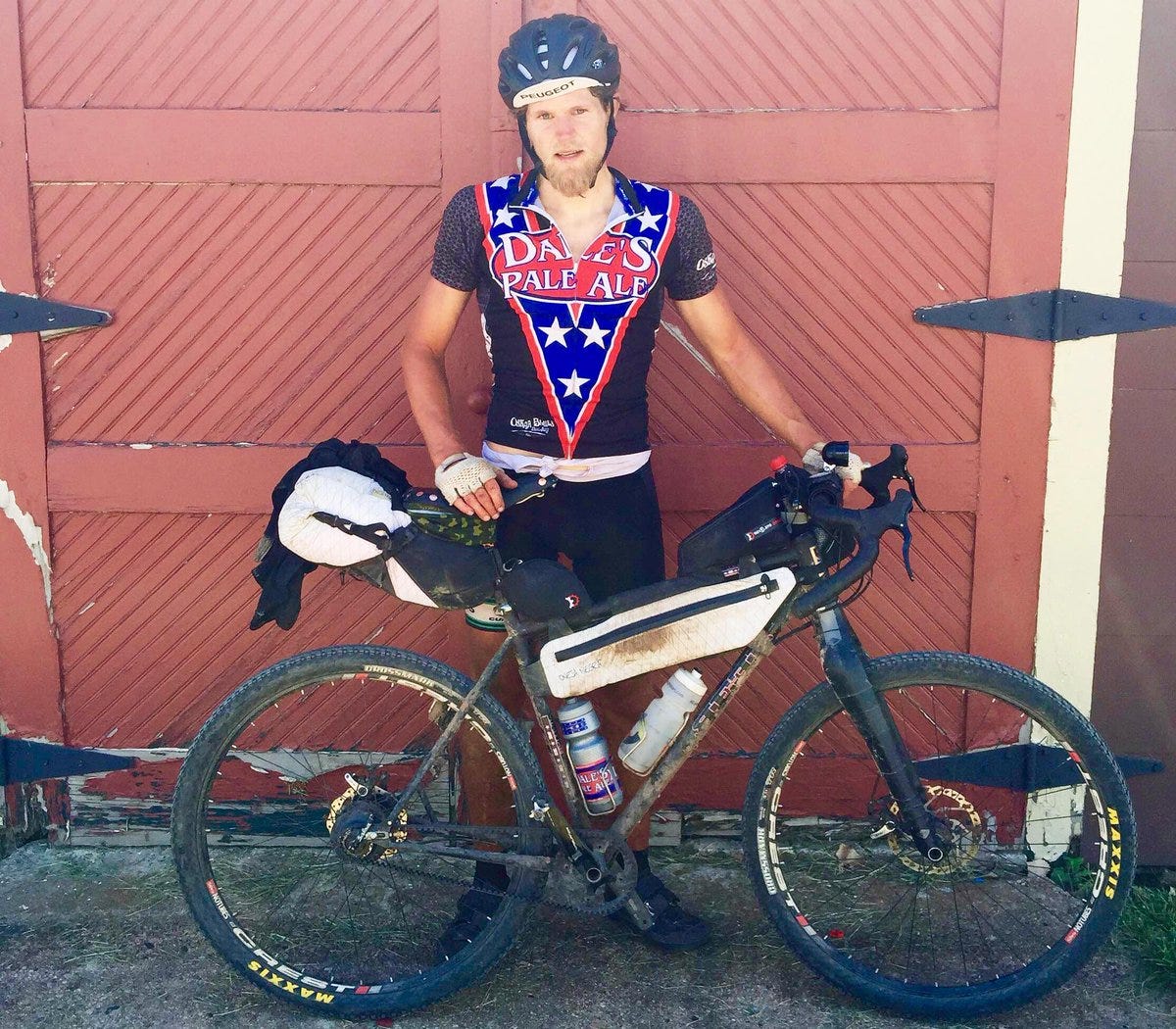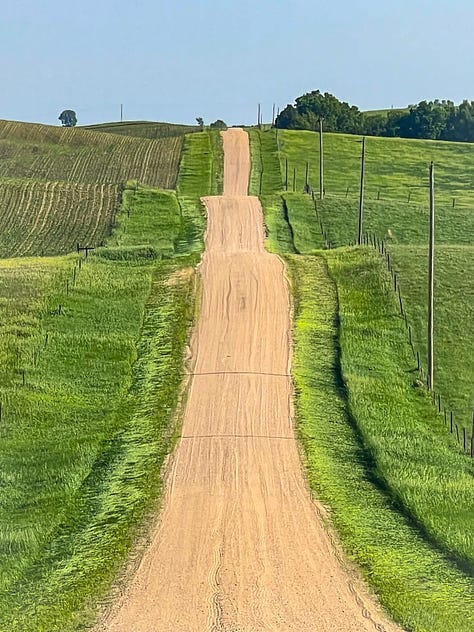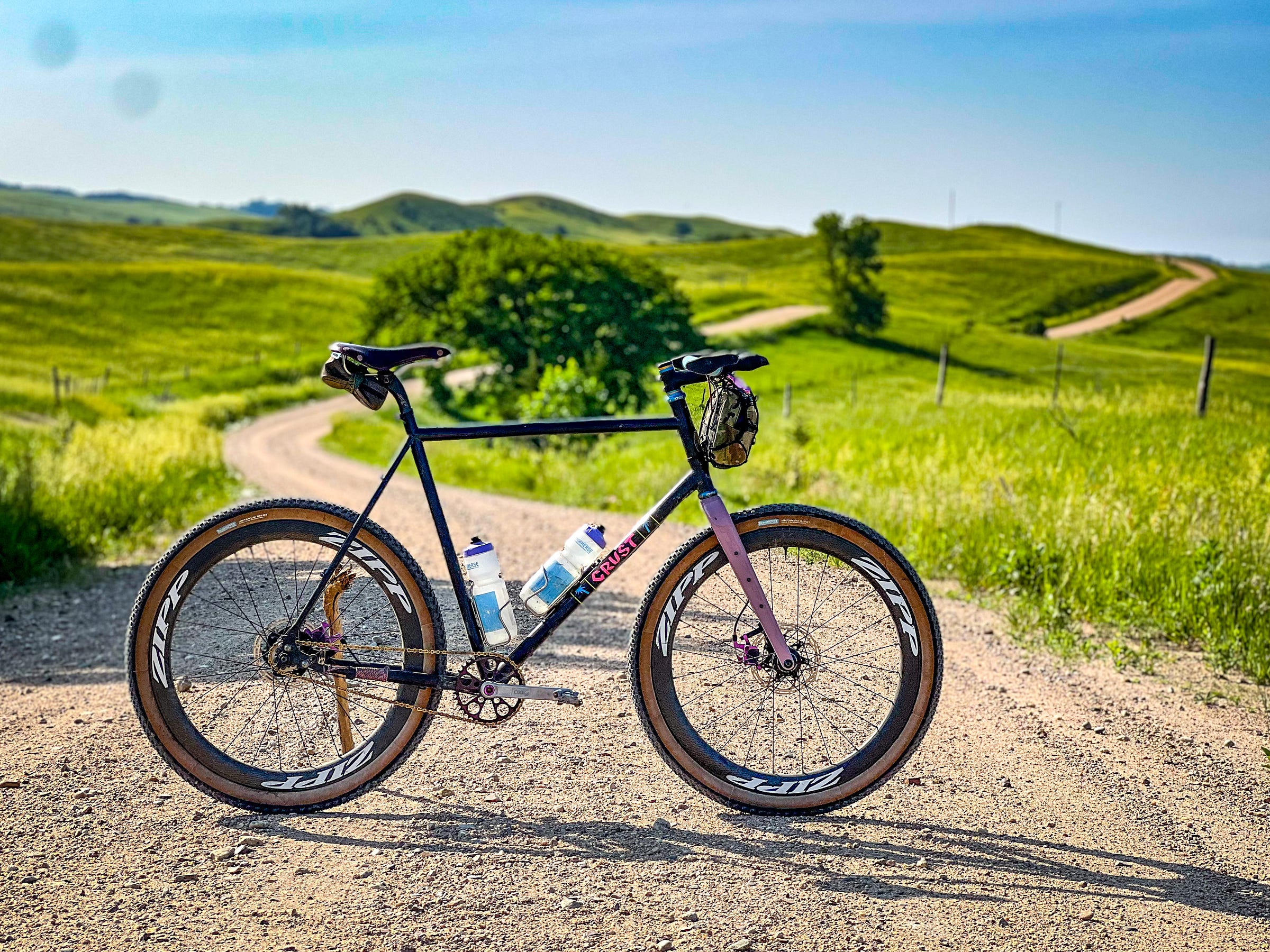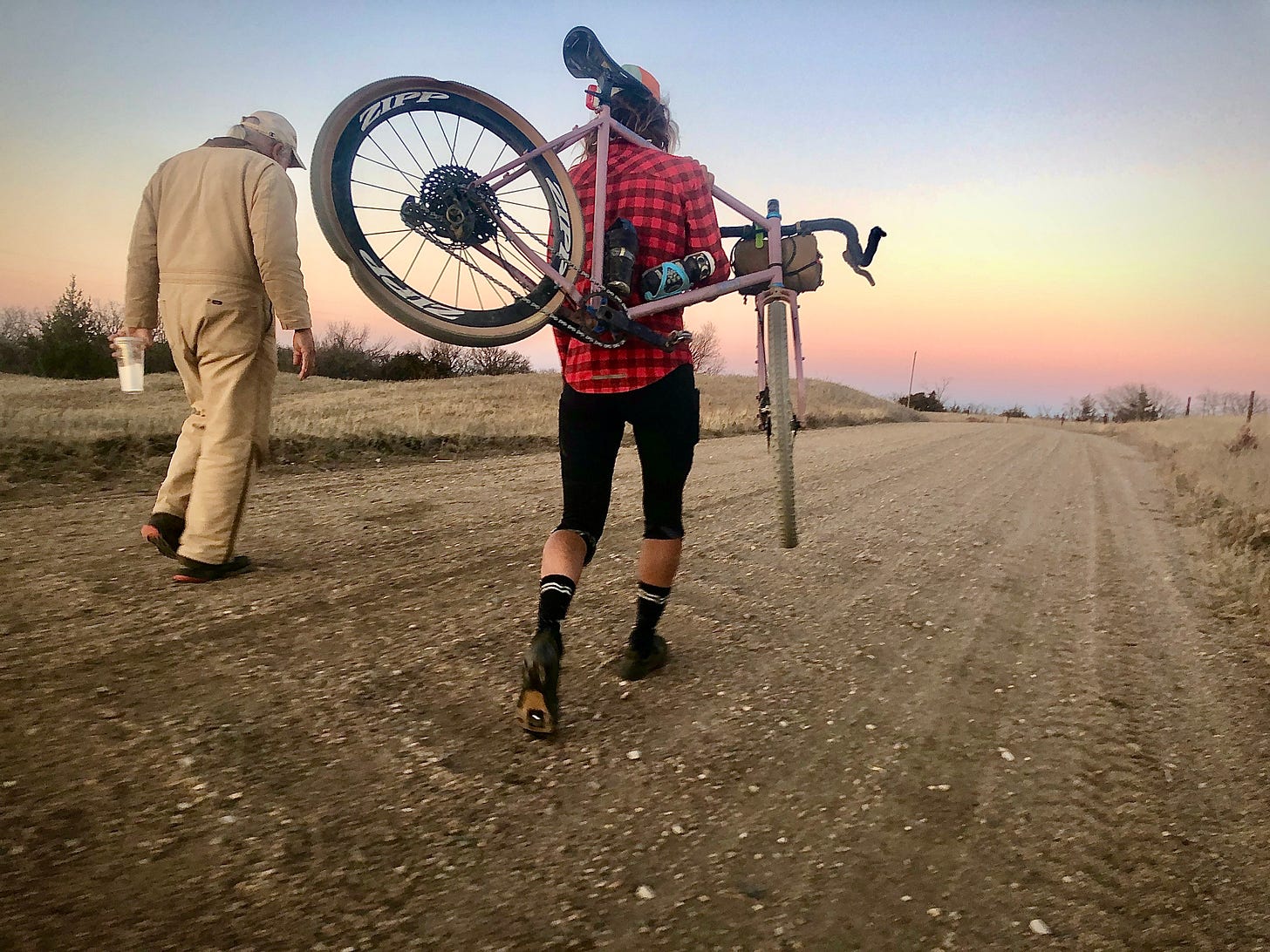My dad lives way out in the sticks. Northern Nebraska, specifically, just a couple of miles from where the Niobrara River terminates in the larger Missouri River, which is also the border with South Dakota. This plains region is characterized by a classic continental climate—stiflingly hot and humid summers, brutally cold and snowy winters and always with the wind.
It’s where I grew up, my primary residence for the first two decades of my life, and where I still refer to as home. There’s a whole essay—book, even—to be written about the currently confounding-yet-fascinating socio-economic-political landscape of this part of the country. For the purposes of this story, though, it is only important to know that, for my entire life, this is where my dad has carved out his own quixotic niche of existence. One that is at once emblematic of the traditional homesteader’s mindset and simultaneously almost in perfect contradiction to it.
Which is another way of saying: my Dad shovels a lot of snow each winter. Big steel grain shovel. Gripped with two hands, powered exclusively by his hips, back and shoulders. Damn thing weighs nearly five pounds on its own.
Our “driveway” is a 250 yard cobble-y, gravelly, sandy double-track with a persistent center strip of grass. It winds about 100 vertical feet to the top of a ridge with stupendous (by Nebraska standards) views east out over the Bazile Creek valley and northwest to the sprawling Missouri River valley. A township road—another simple doubletrack—inscribes the crest of this ridge and is (only somewhat reliably) plowed clear of snow after a big storm by the township maintainer. Which, for much of my childhood, wasn’t even a proper road grader, but was instead simply a standard field tractor fitted with a snowplow.
To not be snowed-in during the winter, my Dad has to clear those 250 yards of steep, uneven double-track. It’s not uncommon for a winter storm in northern Nebraska to drop a foot of snow, which seems to be unfailingly accompanied by 35-60mph NNW winds that blow said snow into spectacular, often waist-deep (or higher) drifts. My dad has mitigated much of this with a few snow fences, but there are always still a couple portions of the driveway that require much extra effort to clear.
Dad has a thing for self-reliance and simplicity. Basically, in his worldview, simplicity trumps convenience. Almost every single time. This demanding, romantic principle can be infuriating to witness, especially now that my Dad is in his 76th year. But, I get it. A man has to have a code.
My friend Joe has always been way handier with a bike than I am. I have ridden my bike a lot over the past decade, but never particularly quickly, nor with much technical skill. What might be considered Joe’s first-ever real mountain bike ride was the 2015 Colorado Trail Race, a ~560mi self-supported summer trek from Durango to Denver (or vice versa) that many hail as among the most testing of bikepacking events on the calendar.
Joe’s bike in 2015 had a drop bar and a rigid fork. He finished in just a bit over five days. Heckuva virgin voyage. The soles of his shoes were nearly gone at the finish because his brakes were failing on the final descent into southeast Denver’s Waterton Canyon. To scrub speed, he’d resorted to just dragging a foot and white-knuckling it. His hands were numb—severe abuse of the ulnar nerves—for months afterwards.

While I was absolutely impressed and inspired by his effort, I was only a couple of months removed from my last competitive ultramarathon, and was still largely stuck in a singular mindset of where I should be putting my energy (i.e., running). I owned the exact same model of steel, drop-bar bike upon which Joe had completed this journey—and I was riding it regularly—but I wouldn’t even strap camping gear to it for another two years, let alone attempt something as rugged and demanding as the Colorado Trail.
That winter, Joe bought a fat bike. The venerable Surly Pugsley. A steel-frame, singlespeed legend that he would occasionally roll down into Boulder from his home in Gold Hill—3000’ feet and 10 miles above town—and then, of course, eventually mash back up that same climb.
The whole situation—cartoon tires, one gear, one of the toughest climbs in the area—did not compute in my head. I was suffering from iliotibial band syndrome back and forth between both knees at the time and, thus, I was forced into spending most of my time spinning around on the flats aboard my carbon-framed, multi-geared road bike with 23mm tires, which was still my primary vehicle of choice.
Joe’s response to my incredulity-bordering-on-indignation—“With the right ratio, it’s not that bad”—was one that I all but dismissed and attributed to Joe’s persistent dedication to: A) sandbagging euphemisms; and B) some sort of aerie faerie (his own phrasing) transmogrification of sport into art.
My rational brain and limited experience told me there was no way singlespeed could be as fast or efficient as gears, ergo, why bother. Nevermind that my knees would never let me anyway.
A couple years ago, Joe returned to the Colorado Trail for another go, this time in the other direction, this time with a flat bar and more forgiving frame geometry, but still without suspension. Oh, and this time with only one gear. He got ‘er done in less than five days.
We’re both now in our 40’s. I am not too proud to admit that over the past decade-plus I’ve gradually—and maybe a bit sheepishly—adopted many of Joe’s sporting/artistic choices at which I’d originally scoffed. For instance: I now prefer my afternoon coffees with just a little bit of foamed milk; all of my bikes are steel; all of my saddles are leather; I now keep my eye on the Gold Hill real estate market (Joe tried to convince me for years to move there); and, at this point, I’ve logged enough time riding singlespeed to feel justified in possessing strong, positive opinions about the practice.
For the record, there are still plenty of JG stances on which I remain firmly opposed: no flat pedals for any kind of meaningful riding (come on, do I look like a child?); no powsurfing (as if I’d have the requisite athletic skill anyway); no non-ski snow racing (skis exist for a reason, they are an efficient and elegant way to traverse the backcountry in winter); no multi-day foot-travel efforts (my body would never hold up).
But Joe was definitely right about singlespeeding.
After spending 2023 almost exclusively riding singlespeed bikes—as far as 260 miles in a day, as much as 15,000’ of vertical gain in a single ride—I’ve re-integrated geared bikes into my life the last couple years, but I make it a point to stay in touch with the one-gear ethic. The honesty and simplicity of a lone cog makes it a form of pedaling that is intrinsically rewarding.
When I was back home in Nebraska recently, my Dad asked me why I was riding a singlespeed bike. Wasn’t the loose, wash-boarded gravel surface and endlessly undulating topography challenging enough with a proper cassette of gears? I made an attempt at explaining how pedal bikes can perhaps be thought of as existing on a continuum from most simple to least simple with no-brakes fixies and e-bikes as the likely two end-members of said spectrum.
Cyclists choose—consciously or unconsciously—what step along this continuum speaks to them the most, artistically and functionally, I explained. Ostensibly, our actions/choices embody our values and maybe signal a kind of aesthetic or sometimes even ethical underpinning. I know that type of thing sounds eye-rollingly high-minded, but we all have to make our meaning somewhere. Intention and attention with the way we engage the world is the best way I know of for remaining an active agent in my own life.
In response to my proposal of such a cycling continuum, my dad cited economist E.F. Schumacher’s concept of ‘appropriate technology’. Dad thought gears and a derailleur seemed a whole lot more appropriate for the endlessly rolling, punchy and loose pitches of Nebraska’s ubiquitous dirt and gravel roads.
So then I was forced to ask him why he spent the past winter hand-shoveling a 250 yard driveway—at age 76—instead of, you know, grading it, paving it, and using a small tractor or snowblower to clear the track. I could have just as easily asked him about any of the myriad other seemingly ridiculous ways in which my Dad continues to conduct his day-to-day life out on our homestead, for the stated purpose of “simplicity”.
His one-word response: “Tone.” Delivered with a mischievous grin that said, you know the answer.
The clear subtext: A man has to have a code.



A decade ago I probably cared more about optimization, maximization, efficiency and outcomes. Carbon bikes, fast times, race results. Now as a middle-aged athlete and human, I find myself increasingly more interested in the means than the end. That might sound like a cop-out in response to my waning peak physical abilities. But I think such an attitude is also just the result of a natural maturation as one goes through life.
It’s fine—maybe even appropriate—to not have this perspective in one’s 20s and 30s. I certainly didn’t. But, more and more, it’s becoming obvious to me that life is in the doing, not in the being done. How I do something feels far more important than any end-goal objective.
Sometimes our actions and ideals don’t hew to any logic. Sometimes they just feel right and true; other times they don’t. Honing in on that feeling and rigorously interrogating it—what constitutes a good life? Do my actions align with my values?—rather than ignoring it because you’re distracted by some ephemeral end-goal is the real work. My dad has spent his entire life doing that work.
But another thing that I’ve slowly realized is that there is no y-axis on the spectrum. The spectrum of fixie or e-bike, the spectrum of shovel or snowplow. There is no firm hierarchy. In most cases, we simply choose what feels right. And, paradoxically, feelings are as mutable as they are true.
Now, if only I could just convince Dad to buy a damn snowblower.












You write beautifully- your own voice and perspective comes through strongly. My hunch is in part refined by many books that you have read over the years. Keep penning these musings - I enjoy reading them.
Incredible essay, yet again. You philosophically couple major topics such as, maturation, a man’s code, and “the pursuit”, like no other. Thanks for writing these. Each essay is like reading, Once A Runner for the first time again.